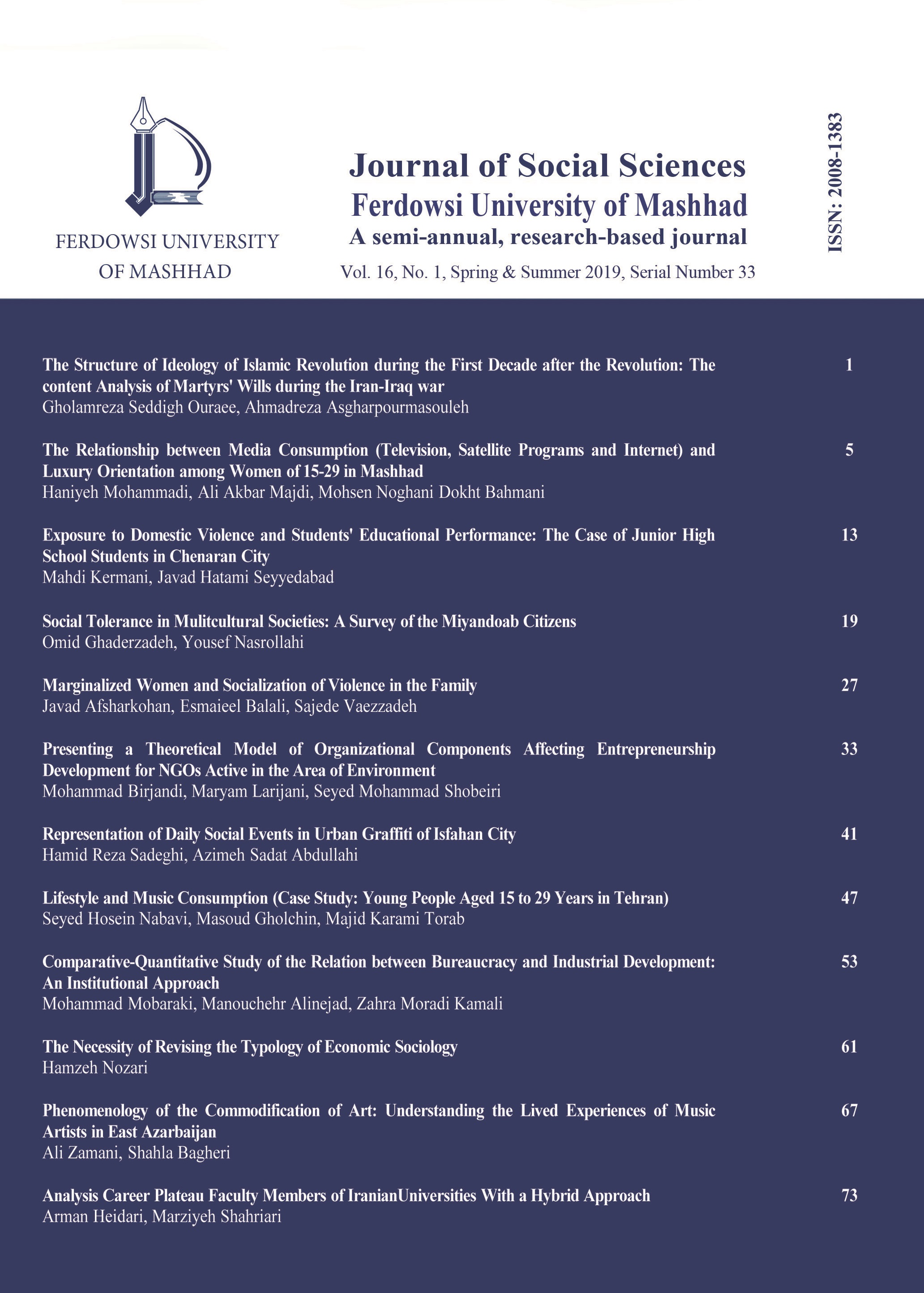Document Type : Scientific-Research
Authors
1 Ferdowsi University of Mashhad
2 Islamic Azad University, Quchan Branch
Abstract
Extended Abstract
Introduction
Violence is a relatively challenging and multidimensional phenomenon for social scientists. It is dependent on mental processes and manifests in the form of individual behaviors, but in fact, it is a social phenomenon. In other words, in many cases, the context for actualization and realization of violent behaviors is social relationships and social actions. Many social researchers have studied families as one of the social institutions in which the occurrence of violence is likely. This study, considering the role of families in shaping personalities and social practices, aimed to investigate the exposure of students to violence at home and its impact on their educational performance. Then based on results, it will try to provide solutions for the problem. This research sought to answer the following two questions:
- How much have students in the target community faced domestic violence?
- Is there a relationship between exposure to domestic violence and students' educational performance?
Review of Literature
There is an inverse relationship between exposure to violence and educational performance among children and adolescents (Carrell & Hoekstra, 2010; Rugutt & Chemosit, 2005). Some studies report this relationship in terms of mediating psychological variables (e.g., Ibarra & Wilkins, 2007; Thomson & Massat, 2005). Researchers focused on Iran have considered the relationship between variables such as mental health or quality of life and the occurrence of violence and consequently affecting children's educational performance (e.g., Rezaei, 2006; Mohammadkhani, 1999).
Sociological theories on family and neighborhood have tried to explain violence. According to theories, such as social learning (Bandura, 1978), resources in the hands of activists (Goode, 1971), gender attitudes (Ezazi, 2001), people's perception of the desired pattern of interpersonal exchange (Aramaki Azad, 2002; Ritzer, 1995), and patterns of social relations regulation (Rafipoor, 1999), are particularly important in explaining violence.
James S. Coleman's theory is particularly relevant to this study. According to this theory, the material resources provided in schools do not make much difference in educational performance. Instead, the explanatory factor is the social and familial context of children (Baker, 2007). According to Coleman, inequalities imposed on children at home, in the community, and by peers later become inequalities faced by adults at the end of school (Giddens, 1999). In other words, Coleman's discussions can highlight the importance of family environment, including the prevalence of violence, on children's educational performance, and consequently, on the characteristics of their adult life.
Method
Survey was the primary method of this study. The population of the study included students in the first year of high school in the city of Chenaran during the 1394-1395 (2005-2006) educational year. The sample size of 492 individuals is estimated using Morgan and Krejcie's (1970) table. The questionnaire validated through a content validity approach. Cronbach's alpha secured the reliability of the questionnaire based on the pre-test data.
Results and Discussion
The findings are related to theories we reviewed in the field of violence such as social learning theory (Bandora, 1978), resource theory (Goode, 1971), and Coleman's theoretical and experimental findings (Baker, 2007). Besides, the relationship reported in this study between domestic violence and educational performance in other empirical studies, such as Rezaei (2006), Thomson and Masat (2005), Ibarra and Wilkens (2007), and Carl and Hoekstra (2010), also has been observed and approved.
Conclusion
Violence rises as a result of some social, cultural, economic, and psychological factors and therefore it cannot be tackled based on a single, pre-existing process. Then a series of supportive and awareness-raising programs can be implemented to prevent violence. The formulation of such programs requires a balance between interests, priorities, conditions, and characteristics of both violent and violent groups. It is also necessary to have a clear picture of the status quo along with specific criteria in order to formulate the desired outlook. The realization of such programs requires further studies on the spatial and temporal domains and variables.
Keywords

Send comment about this article